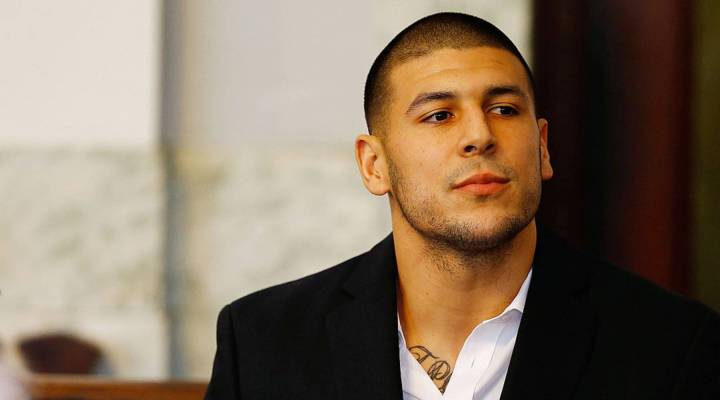
Brain injury revelations are nothing new for the NFL

Long-held concerns about football and concussions are back in the spotlight, after autopsy results for former New England Patriot Aaron Hernandez show that the 27-year-old had significant brain damage when he committed suicide in prison, while serving a sentence for homicide. His family has announced plans to sue the NFL. Hernandez had advanced-stage chronic traumatic encephalopathy, or C.T.E. It’s just the latest brain injury revelation for the league.
“You’ll see articles from 2013, or even 2012, that say ‘Is the NFL finished because of the CTE issues?’ said Brandon Brown, assistant professor at New York University’s Tisch Institute for Sports Management, Media, and Business.
Spoiler alert: it wasn’t. In fact, the league’s TV ratings hit some record highs in the past five seasons.
As for future players — youth participation has declined about 15 percent since 2009, according to youth league organizer USA Football. Brown said a shrinking young player pipeline isn’t slowing the sport, though.
“Even if half of the participants stopped playing, you would still have equal demand a) to get into the NFL and b) to watch the NFL,” Brown said.
The league likes to promote safer play. NFL-sponsored USA Football runs a “Heads Up Football” program that teaches young players to lead with their shoulders. Football historian Matt Chaney said coaches have tried that since the 1890s.
“It’s impossible, in a forward-colliding, forward-leveraged sport, to keep your head out of this,” Chaney said. “This is a collision kill game.”
The NFL has funded research to detect or help prevent C.T.E. but even that’s been controversial — a congressional committee previously found the league tried to influence concussion research.
Greg Stewart is with a Tulane University clinic for former athletes, funded in part by the NFL. He said when he treats veteran players with a host of serious problems, he always asks them: if they had the opportunity to go back and do it all over again, would they?
“Easy — 95 percent of them say yes, absolutely,” Steward said.
But, he adds, fewer say they’d let their kids play.
| NFL players lobby Congress for criminal justice reform |
| The big money NFL players earn may not last into retirement unless they make a plan |
There’s a lot happening in the world. Through it all, Marketplace is here for you.
You rely on Marketplace to break down the world’s events and tell you how it affects you in a fact-based, approachable way. We rely on your financial support to keep making that possible.
Your donation today powers the independent journalism that you rely on. For just $5/month, you can help sustain Marketplace so we can keep reporting on the things that matter to you.


















